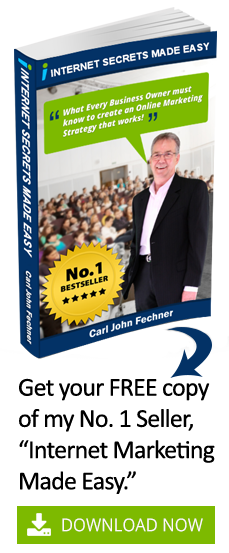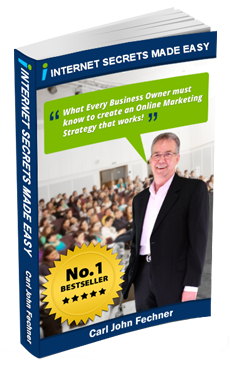One of the most repeated rules of compelling copy is to stress benefits, not features. In other words, identify the underlying benefit that each feature of a product or service provides to the prospect, because that’s what will prompt
the purchase.
This is one rule that always applies, except when it doesn’t. We’ll look at the exceptions in a bit.
Fake Benefits
The idea of highlighting benefits over features seems simple. But it’s often tough to do in practice.
Writers often end up with fake benefits instead.
Top copywriter Clayton Makepeace asserts that fake benefits will kill sales copy, so you have to be on the lookout for them in your writing. He uses this headline as an example:
“Balance Blood Sugar Levels Naturally!”
That sounds pretty beneficial, doesn’t it? In reality, there’s not a single real benefit in the headline.
True Benefits
Makepeace advises to apply his patented “forehead slap” test to see if your copy truly contains a benefit to the reader. In other words, have you ever woken up from a deep sleep, slapped yourself in the forehead, and exclaimed
“Man… I need to balance my blood sugar levels naturally!”
It doesn’t happen. So getting someone to pull out their wallet to buy that socalled “benefit” will be difficult at best.
Here’s how Makepeace identifies the real benefit hidden in that headline:
Nobody really wants to balance their blood sugar levels. But anyone in his or her right mind DOES want to avoid the misery of blindness … cold, numb, painful limbs … amputation … and premature death that go along with diabetes.
A high risk person will want to avoid the terrible effects of diabetes. That is the true benefit that the example product offers.
How to Extract True Benefits
So, how do you successfully extract true benefits from features? Here’s a four-step process that works:
- First, make a list of every feature of your product or service.
- Second, ask yourself why each feature is included in the first place.
- Third, take the “why” and ask “how” does this connect with the prospect’s desires?
- Fourth, get to the absolute root of what’s in it for the prospect at an emotional level.
Let’s look at a product feature for a fictional News Feed Reader app:
Feature:
“Contains an artificial intelligence algorithm.”
Why it’s there:
“Adds greater utility by adapting and customizing the user’s information experience.”
What’s in it for them:
“Keeps the things you read the most at the forefront when you’re in a hurry.”
Emotional Root:
“Stay up to date on the things that add value to your life and career, without getting stressed out from information overload.”
Getting to the emotional root is crucial for effective consumer sales. But what about business prospects?
When Features Work
When selling to business or highly technical people, features alone can sometimes do the trick. Pandering to emotions will only annoy them. Besides, unlike consumers (who mostly “want” things rather than “need” them),
business and tech buyers often truly need a solution to a problem or a tool to complete a task. When a feature is fairly well known and expected from your audience, you don’t need to sell it.
However, with innovative features, you still need to move the prospect down the four-step path. While the phrase “contains an artificial intelligence algorithm” may be enough to get the Slashdot reader salivating, he’ll still want
to know how it works and what it does for him. The What’s in it for me? aspect remains crucial.
For business buyers, you’re stressing “bottom line” benefits from innovative features. If you can demonstrate that the prospect will be a hero because your CRM product will save her company $120,000 a year compared to the current choice, you’ve got a good shot.
While that may seem like a no-brainer purchase to you, you’ll still need to strongly support the promised benefit with a detailed explanation of how the features actually deliver. Remember, change scares the business buyer,
because it’s their job or small business on the line if the product disappoints.
Sell With Benefits, Support With Features
We’re not as logical as we’d like to think we are. Most of our decisions are based on deep-rooted emotional motivations, which we then justify with logical processes. So, first help the right brain create desire, then satisfy the left brain with features and hard data so that the wallet actually emerges.
Persuading your reader with features and benefits is important — but you also need to know how to craft a truly compelling offer. Let’s look at some guidelines for creating offers in our next section.
“Kids Eat Free” and Other Irresistible Offers
The sign says it all – “Kids Eat Free Every Monday and Tuesday.” It’s out in front of a Mexican food restaurant on my way home.
That’s called an offer. It’s not the restaurant’s main offering (which is trading Mexican food for money). As far as that goes, this is probably the third best (out of four) Mexican food joints in my hometown.
But every Monday and Tuesday night, the place is packed. They’ve made an appealing offer that caused people to take action.
“Offer” is a contractual term. It’s an invitation to enter into an economic relationship, or any relationship really.
The relationship is based on mutual promises. I’ll do this for you if you give me money or attention or sex or friendship…
If there’s no acceptance of the invitation, there’s no contract and no relationship.
Uber-marketer Mark Joyner devotes an entire book to the subject of offers. He demonstrates that hugely successful businesses are built upon an Irresistible Offer.
Joyner’s work makes great companion reading to Seth Godin’s All Marketers Are Liars, because both books say the same thing in different ways.
Formulating an irresistible offer means telling a story that people want to hear, so they naturally respond.
You must then live the story and fulfill the offer.
It’s helpful to think about offers as coming in two varieties – primary and promotional. I’ll highlight a couple of Joyner’s favorite irresistible offers to demonstrate one of each type.
Primary Offers: Federal Express
FedEx is a billion dollar company so essential that corporate commerce might grind to a halt if they and their progeny ceased business. The company originated with an idea expressed in a Yale undergraduate term paper
authored by founder Fred Smith, which according to popular lore received a C from his skeptical professor.
The company filled a huge need at the time, because the monopolistic United States Postal Service provided unacceptable results to really important people, mainly on Wall Street. So Fred took Wall Street’s money and became essential by providing an offer that couldn’t be refused – guaranteed overnight delivery.
When it absolutely, positively has to be there overnight.
About the only thing this offer doesn’t communicate is price. If the price wasn’t right, FedEx would not have blasted off; but in the early days, price wasn’t the first question you asked if it really, absolutely, positively had to be
there the next morning.
Promotional Offers: Domino’s Pizza
Tom Monaghan entered the world of pizza with a single location he bought in 1960. Pizza is a tough business – it’s the only food item that has its own category in the Yellow Pages, and there’s always several shops to choose from
in any reasonably populated area.
While trying to expand the business, Monaghan faced near bankruptcy and franchise disputes that almost buried Domino’s. But one single promotional idea changed everything and put Domino’s in an overwhelmingly dominant
position in this ultra-competitive field:
30 minutes or less… or it’s free.
That simple guarantee was explosive. The secret to the offer’s success resides in the nature of your average tired, hungry, time-strapped citizen. What seems like the safer bet – the tastiest pizza in town with unpredictable timing, or the pizza that arrives in a half-an-hour or else ends up a free meal?
The irony is, back before Domino’s had to discontinue the offer in 1993 due to an auto injury lawsuit, the pizza sucked. Some think it still does.
Each day, millions of people in more than 60 countries eat Domino’s.
Make an Offer
It’s troubling to see so many companies and solos trying to gain business online, yet without ever making a compelling offer. There’s no apparent reason why someone should select you from the overcrowded field, because often
you’ve made no express offer at all.
So many websites assume that a visitor will get the obvious value that the owner knows he provides. Value is communicated through offers, however, and those offers must be communicated quickly and explicitly. Consider your
own surfing habits for a second, and ask yourself – why would my target audience be any different?
In the lingo of direct-response copywriting, an offer is a call to action. For bloggers, desired actions include having a reader subscribe, bookmark you, make comments, respond to surveys, share your post on social networking
sites, and utilize your information resources that double as sales tools.
Start making offers if you want some action.
ARTICLE SOURCE: This content is syndicated news that can be used for your research, and we hope that it can help your productivity. This content is for educational purposes and is not made for any kind of commercial purposes of this blog.




